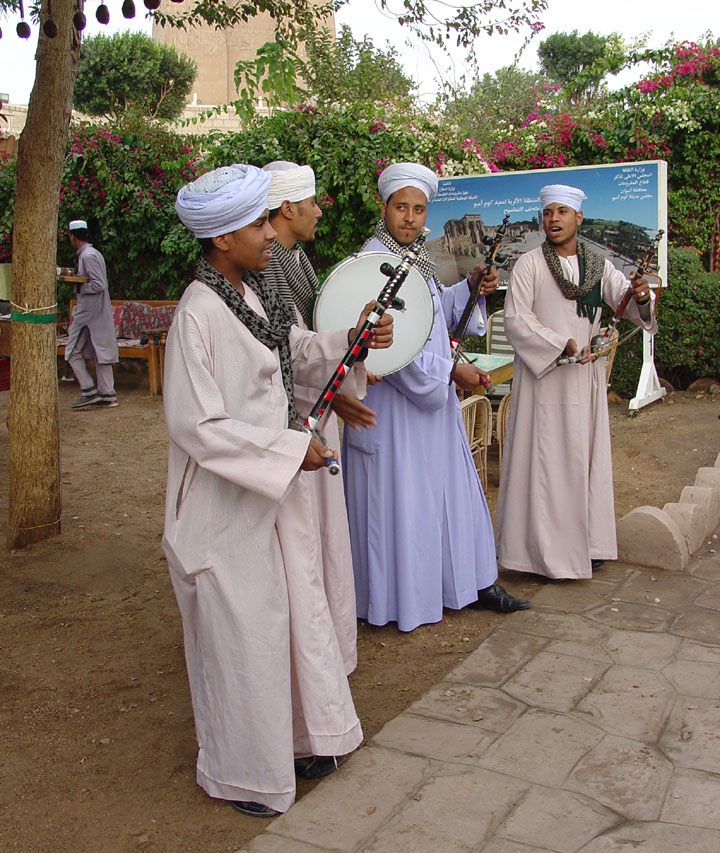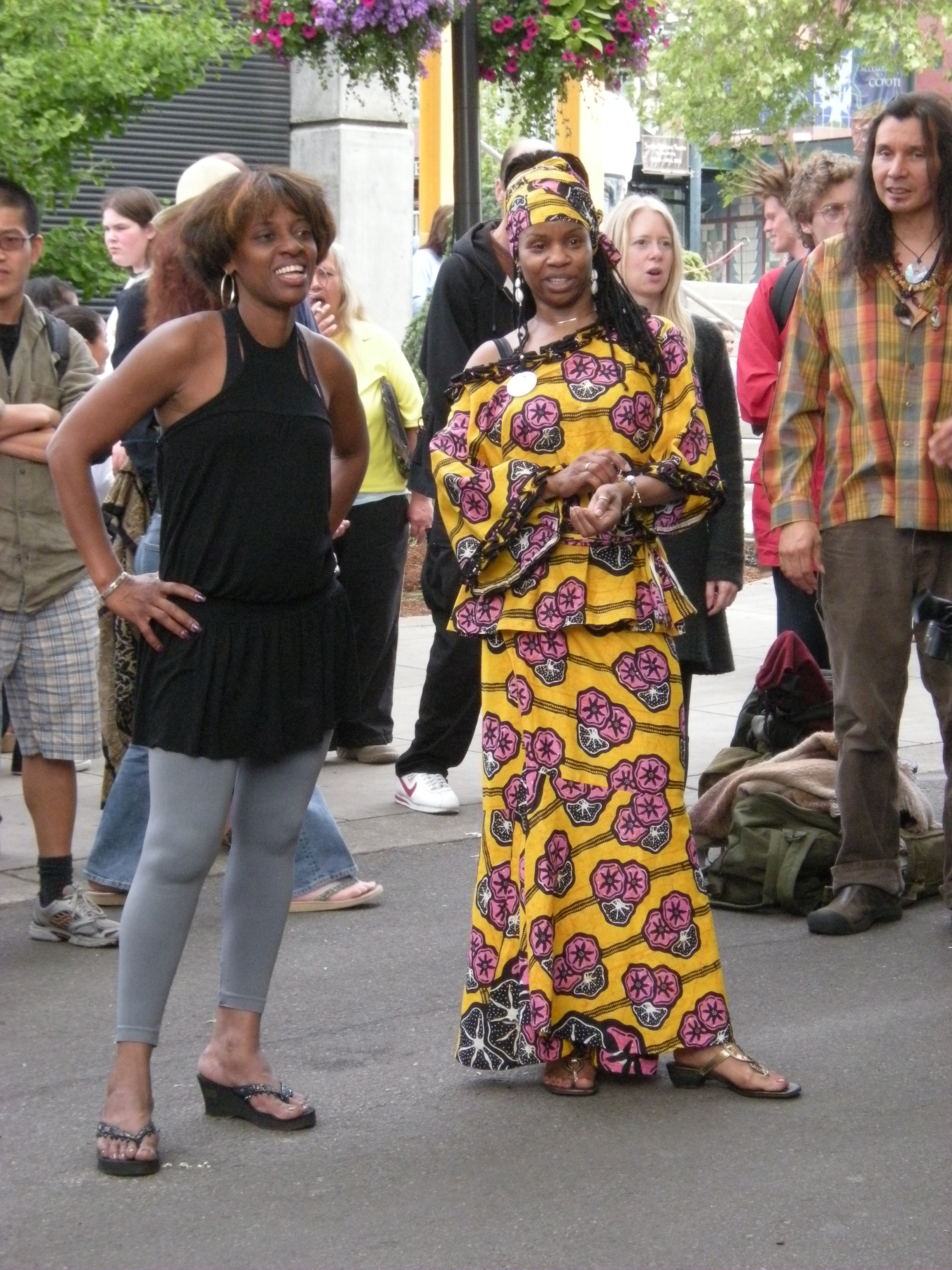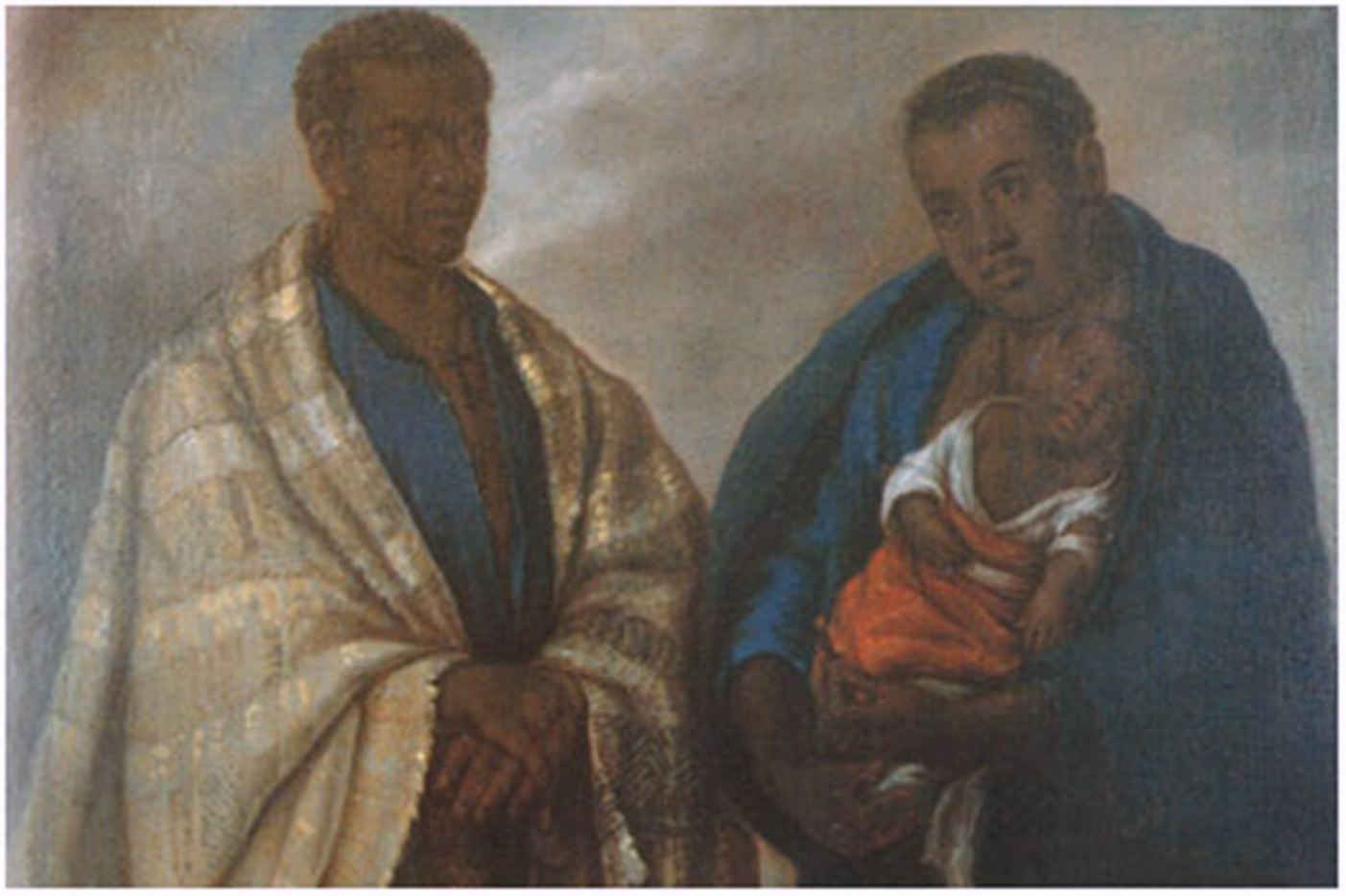|
Senegalese Kaftan
A Senegalese kaftan is a pullover men's robe with long bell sleeves. In the Wolof language, this robe is called a ''mbubb'' or ''xaftaan'' and in French it is called a ''boubou''. The Senegalese caftan is an ankle length garment. It is worn with matching drawstring pants called ''tubay'' in Wolof. Normally made of cotton brocade, lace, or synthetic fabrics, these robes are common throughout West Africa. A kaftan and matching pants is called a kaftan suit. The kaftan suit can be worn with a kufi cap. Senegalese kaftans are formal wear in all West African countries. In the United States, some merchants sell this robe as a ''Senegalese style dashiki pant set'' or a ''full length dashiki pant set''. Men who are members of the Hausa tribe, wear these kaftans to formal events like naming ceremonies and weddings. In the United States, a kaftan is one of three formal suits, equivalent to the tuxedo, that African-American grooms select for their weddings. The other styles being the das ... [...More Info...] [...Related Items...] OR: [Wikipedia] [Google] [Baidu] |
Richard W
Richard is a male given name. It originates, via Old French, from Old Frankish and is a compound of the words descending from Proto-Germanic ''*rīk-'' 'ruler, leader, king' and ''*hardu-'' 'strong, brave, hardy', and it therefore means 'strong in rule'. Nicknames include "Richie", "Dick", "Dickon", " Dickie", "Rich", "Rick", "Rico", "Ricky", and more. Richard is a common English, German and French male name. It's also used in many more languages, particularly Germanic, such as Norwegian, Danish, Swedish, Icelandic, and Dutch, as well as other languages including Irish, Scottish, Welsh and Finnish. Richard is cognate with variants of the name in other European languages, such as the Swedish "Rickard", the Catalan "Ricard" and the Italian "Riccardo", among others (see comprehensive variant list below). People named Richard Multiple people with the same name * Richard Andersen (other) * Richard Anderson (other) * Richard Cartwright (other) * Ri ... [...More Info...] [...Related Items...] OR: [Wikipedia] [Google] [Baidu] |
Yoruba People
The Yoruba people (, , ) are a West African ethnic group that mainly inhabit parts of Nigeria, Benin, and Togo. The areas of these countries primarily inhabited by Yoruba are often collectively referred to as Yorubaland. The Yoruba constitute more than 42 million people in Africa, are a few hundred thousand outside the continent, and bear further representation among members of the African diaspora. The vast majority of the Yoruba population is today within the country of Nigeria, where they make up 21% of the country's population according to CIA estimations, making them one of the largest List of ethnic groups of Africa, ethnic groups in Africa. Most Yoruba people speak the Yoruba language, which is the Niger–Congo languages, Niger-Congo language with the largest number of native or L1 speakers. In Africa, the Yoruba are contiguous with the Yoruboid languages, Yoruboid Itsekiri to the south-east in the northwest Niger Delta, Bariba people, Bariba to the northwest in Benin a ... [...More Info...] [...Related Items...] OR: [Wikipedia] [Google] [Baidu] |
Jellabiya
The jellabiya, also jalabiya or galabeya ( ar, جلابية / ALA-LC: ', Egyptian Arabic, Egyptian slang: Galabyia, ; "jelebeeya" in Ethiopia; "jehllubeeya" in Eritrea) is a loose-fitting, traditional Egyptian garment from the Nile Valley. Today, it is associated with farmers living in the Republic of Egypt (Giza-Cairo, Luxor, and Aswan) and comes in rich color varieties. The garment is also worn in Sudan, but has other textures and is usually white, as well as some communities from Eritrea and Ethiopia. The colorful Egyptian style is used by both men and women. The jellabiya differs from the Arabic thawb, as it has a wider cut, no collar (in some cases, no buttons) and longer, wider sleeves. Versions for farmers have very wide sleeves and sewn-in pockets used to carry tobacco, money, or other small items. Along the Red Sea coast in Egypt, Nubia and Sudan and among Beja people, Beja tribesmen, the Arabic dishdash is preferred due to the jellabiya's relation to farming. Jellabiya ... [...More Info...] [...Related Items...] OR: [Wikipedia] [Google] [Baidu] |
Thawb
Thawb ( ar, ثَوْب "garment"), also spelled thobe or tobe and known by various other names in different regions, is an ankle-length robe, usually with long sleeves. It is commonly worn in the Arabian Peninsula, the Middle East, North Africa, and other neighbouring Arab countries, and some countries in East and West Africa. Etymology The word ''thawb'' (ثَوْب) is the Arabic word for "garment". It is also romanized as ''thobe'' or ''thaub''. Prevalence and regional differences in names and use by gender Middle East and North Africa The ''thawb'' is commonly worn by men in the Arabian Peninsula. It is normally made of cotton, but heavier materials such as sheep's wool can also be used, especially in colder climates in Iraq and Syria. The style of the thawb varies slightly among the various regions in the area. The sleeves and the collar can be stiffened to give a more formal appearance. Other names may be used for this garment. In Iraq, Kuwait, the Levant, and Oman, ... [...More Info...] [...Related Items...] OR: [Wikipedia] [Google] [Baidu] |
Wrapper (clothing)
The wrapper, lappa, or pagne is a colorful garment widely worn in West Africa by both men and women. It has formal and informal versions and varies from simple draped clothing to fully tailored ensembles. The formality of the wrapper depends on the fabric used to create or design it. West African kaftan/boubou In West Africa, a kaftan or ''caftan'' is a pull-over woman's robe. In French, this robe is called a boubou, pronounced ''boo-boo''. The boubou is the traditional female attire in many West African countries including Senegal, Mali and other African countries. The boubou can be formal or informal attire. The formality of the kaftan depends upon the fabric used to create or design it. Yoruba iro In Yorubaland, Nigeria, the wrapper is commonly, called an ''iro'' in the Yoruba language, pronounced ''i-roh''. The literal translation is "the act of wrapping." The wrapper is usually worn with a matching headscarf or head tie that is called a ''gele'' in Yoruba, pronounced ''ge ... [...More Info...] [...Related Items...] OR: [Wikipedia] [Google] [Baidu] |
Wrapper (clothing)
The wrapper, lappa, or pagne is a colorful garment widely worn in West Africa by both men and women. It has formal and informal versions and varies from simple draped clothing to fully tailored ensembles. The formality of the wrapper depends on the fabric used to create or design it. West African kaftan/boubou In West Africa, a kaftan or ''caftan'' is a pull-over woman's robe. In French, this robe is called a boubou, pronounced ''boo-boo''. The boubou is the traditional female attire in many West African countries including Senegal, Mali and other African countries. The boubou can be formal or informal attire. The formality of the kaftan depends upon the fabric used to create or design it. Yoruba iro In Yorubaland, Nigeria, the wrapper is commonly, called an ''iro'' in the Yoruba language, pronounced ''i-roh''. The literal translation is "the act of wrapping." The wrapper is usually worn with a matching headscarf or head tie that is called a ''gele'' in Yoruba, pronounced ''ge ... [...More Info...] [...Related Items...] OR: [Wikipedia] [Google] [Baidu] |
Women
A woman is an adult female human. Prior to adulthood, a female human is referred to as a girl (a female child or Adolescence, adolescent). The plural ''women'' is sometimes used in certain phrases such as "women's rights" to denote female humans regardless of age. Typically, women inherit a pair of X chromosomes, one from each parent, and are capable of pregnancy and giving childbirth, birth from puberty until menopause. More generally, sex differentiation of the female fetus is governed by the lack of a present, or functioning, SRY-gene on either one of the respective sex chromosomes. Female anatomy is distinguished from male anatomy by the female reproductive system, which includes the ovaries, fallopian tubes, uterus, vagina, and vulva. A fully developed woman generally has a wider pelvis, broader hips, and larger breasts than an adult man. Women have significantly less facial and other body hair, have a higher body fat composition, and are on average shorter and less muscu ... [...More Info...] [...Related Items...] OR: [Wikipedia] [Google] [Baidu] |
African Diaspora
The African diaspora is the worldwide collection of communities descended from native Africans or people from Africa, predominantly in the Americas. The term most commonly refers to the descendants of the West and Central Africans who were enslaved and shipped to the Americas via the Atlantic slave trade between the 16th and 19th centuries, with their largest populations in the United States, Brazil and Haiti. However, the term can also be used to refer to the descendants of North Africans who immigrated to other parts of the world. Some scholars identify "four circulatory phases" of this migration out of Africa. The phrase ''African diaspora'' gradually entered common usage at the turn of the 21st century. The term ''diaspora'' originates from the Greek (''diaspora'', literally "scattering") which gained popularity in English in reference to the Jewish diaspora before being more broadly applied to other populations. Less commonly, the term has been used in scholarship to r ... [...More Info...] [...Related Items...] OR: [Wikipedia] [Google] [Baidu] |
African Descent
Black is a racialized classification of people, usually a political and skin color-based category for specific populations with a mid to dark brown complexion. Not all people considered "black" have dark skin; in certain countries, often in socially based systems of racial classification in the Western world, the term "black" is used to describe persons who are perceived as dark-skinned compared to other populations. It is most commonly used for people of sub-Saharan African ancestry and the indigenous peoples of Oceania, though it has been applied in many contexts to other groups, and is no indicator of any close ancestral relationship whatsoever. Indigenous African societies do not use the term ''black'' as a racial identity outside of influences brought by Western cultures. The term "black" may or may not be capitalized. The ''AP Stylebook'' changed its guide to capitalize the "b" in ''black'' in 2020. The '' ASA Style Guide'' says that the "b" should not be capitalized. Som ... [...More Info...] [...Related Items...] OR: [Wikipedia] [Google] [Baidu] |
African Traditional Religion
The traditional beliefs and practices of African people are highly diverse beliefs that include various ethnic religions.Encyclopedia of African Religion (Sage, 2009) Molefi Kete Asante Generally, these traditions are oral tradition, oral rather than Religious text, scriptural and passed down from one generation to another through folk tales, songs, and festivals, include belief in an amount of higher and lower gods, sometimes including a supreme creator or force, belief in spirits, veneration of the dead, use of Magic (supernatural), magic and traditional African medicine. Most religions can be described as Animism, animistic with various polytheistic and pantheistic aspects. The role of humanity is generally seen as one of harmonizing nature with the supernatural. Spread Adherents of traditional religions in Africa are distributed among 43 countries and are estimated to number over 100 million.''Britannica Book of the Year'' (2003), ''Encyclopædia Britannica'' (2003) p.306 A ... [...More Info...] [...Related Items...] OR: [Wikipedia] [Google] [Baidu] |
Muslims
Muslims ( ar, المسلمون, , ) are people who adhere to Islam, a monotheistic religion belonging to the Abrahamic tradition. They consider the Quran, the foundational religious text of Islam, to be the verbatim word of the God of Abraham (or '' Allah'') as it was revealed to Muhammad, the main Islamic prophet. The majority of Muslims also follow the teachings and practices of Muhammad ('' sunnah'') as recorded in traditional accounts (''hadith''). With an estimated population of almost 1.9 billion followers as of 2020 year estimation, Muslims comprise more than 24.9% of the world's total population. In descending order, the percentage of people who identify as Muslims on each continental landmass stands at: 45% of Africa, 25% of Asia and Oceania (collectively), 6% of Europe, and 1% of the Americas. Additionally, in subdivided geographical regions, the figure stands at: 91% of the Middle East–North Africa, 90% of Central Asia, 65% of the Caucasus, 42% of Southeast Asi ... [...More Info...] [...Related Items...] OR: [Wikipedia] [Google] [Baidu] |





.jpg)



